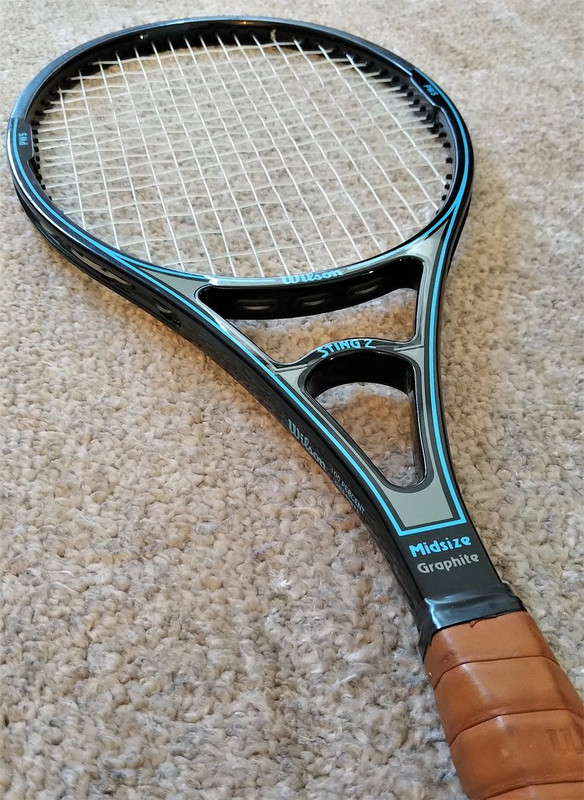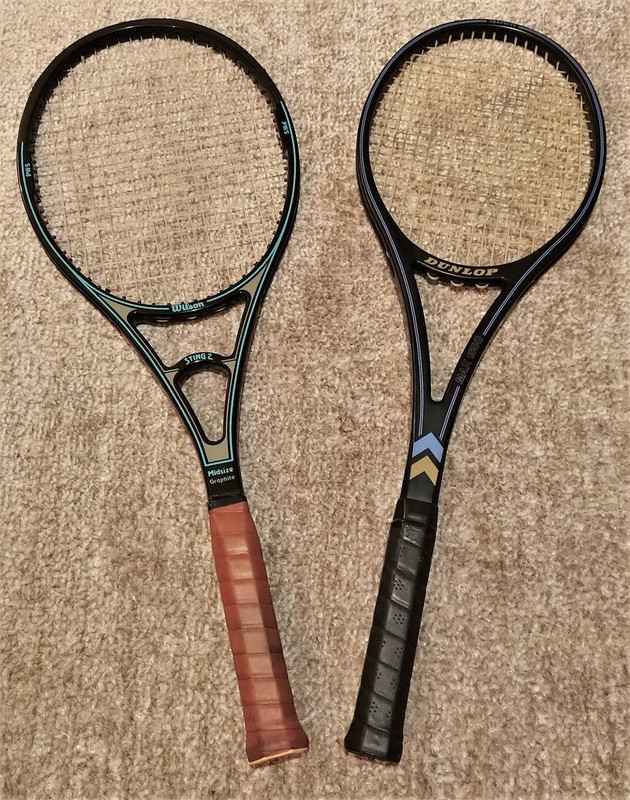There were two distinct mid-size "Sting 2" models. The first one was trimmed in blue, like the regular "Sting", only with PWS added. It was quickly followed by a red-trimmed model without PWS, but featuring a bumper-guard. The blue ones (both the regular "Sting" and "Sting 2") were made by SanHoSun, while the red "Sting 2" may have been contracted to Long-Y. All three models co-existed in 1984, but only the regular "Sting" and the red "Sting 2" continued to be made after that. Later on, the SanHoSun-produced blue "Sting" was also given a bumper guard, along with PWS.
As far as I can tell, the largehead "Sting 2" only came in the red-trimmed variety. If a blue version existed at all (I've never seen one, not even online), it would have to have been made in St Vincent, which briefly produced the largehead blue "Sting" between 1983 and 1984 (these must have been among the first racquets made at the site; they were indistinguishable from the earlier California-produced examples save for the butt-cap code), at about the same time SanHoSun was making the blue mid-size "Sting 2", before Wilson decided to produce all "Stings" in Taiwan from 1984 onward.
The original largehead "Sting" was indeed designed to compete against the POG. It was initially made by the same California contractor that produced the POG from 1979 to 1983, using the same grommetless design and production protocol first developed at Fansteel. The mid-size "Sting" however was produced in Taiwan from the start, and was really a completely different animal under the skin. When the largehead "Sting" went to Taiwan in 1984, it too underwent some immediate changes, the most visible of which was the addition of individual grommets.
Personally, I like how the midsize "Sting" plays, and I really can't tell much difference between the blue and red versions, with or without PWS.
Of course, Wilson came out with the "Sting II" high beam model a few years later, which I like considerably less.



